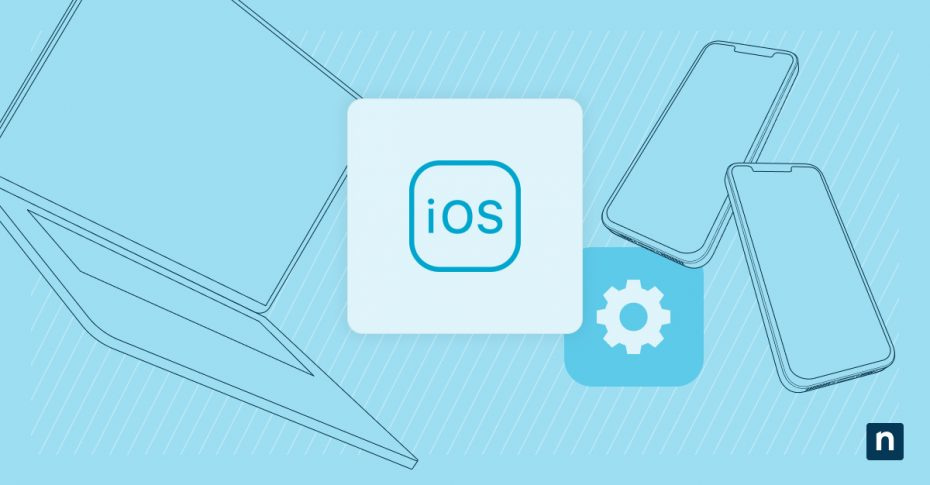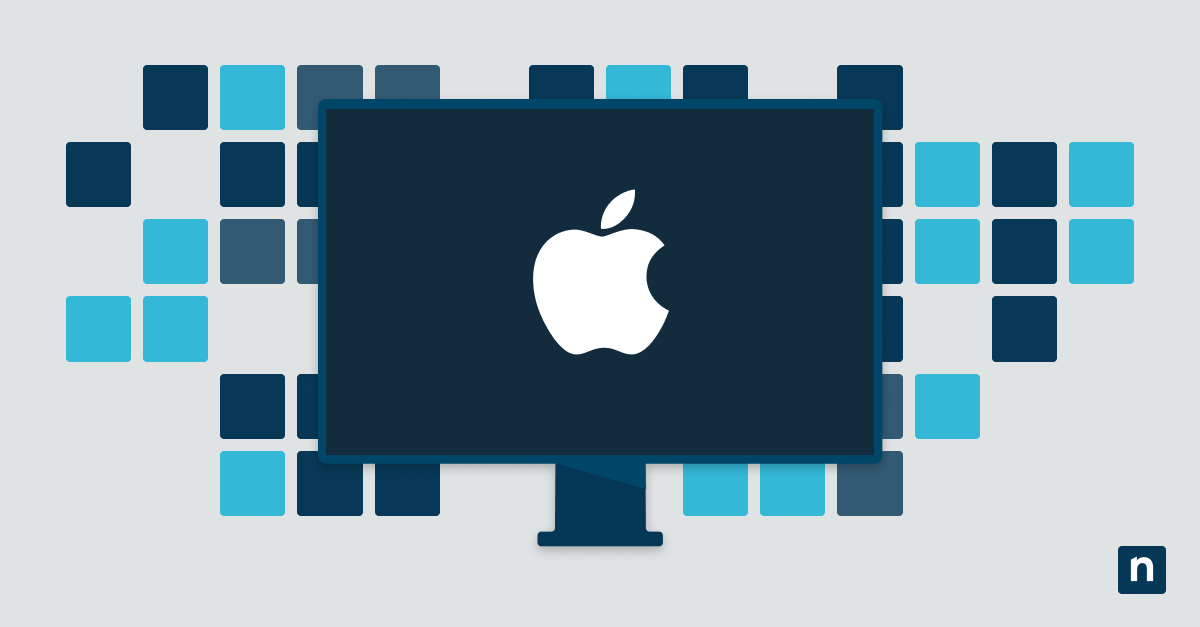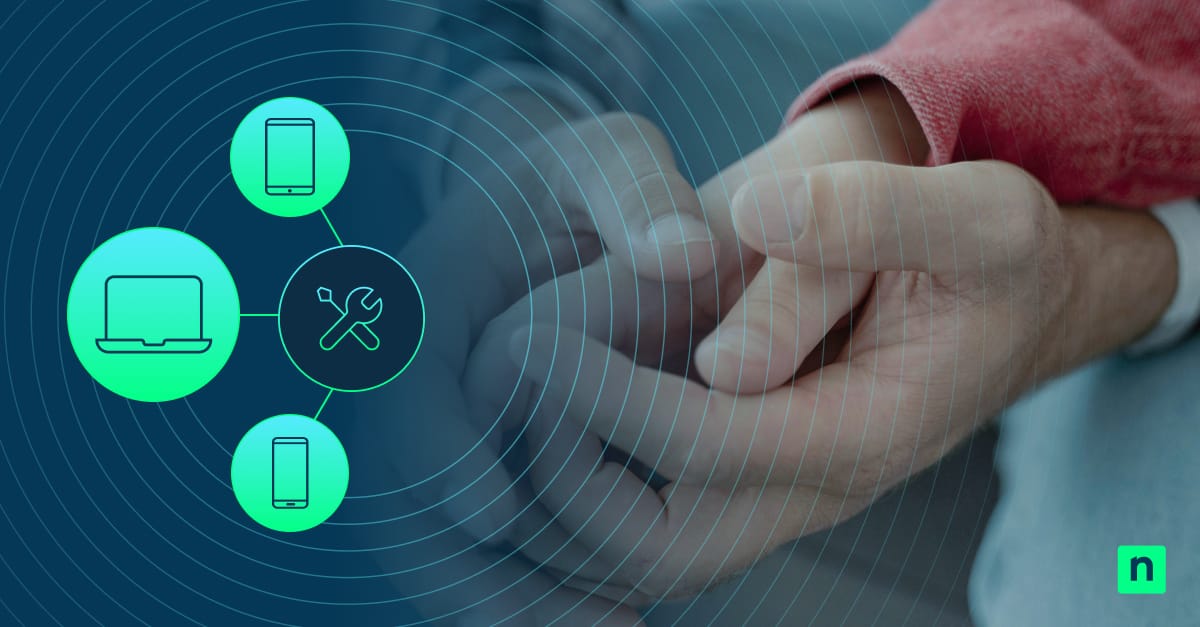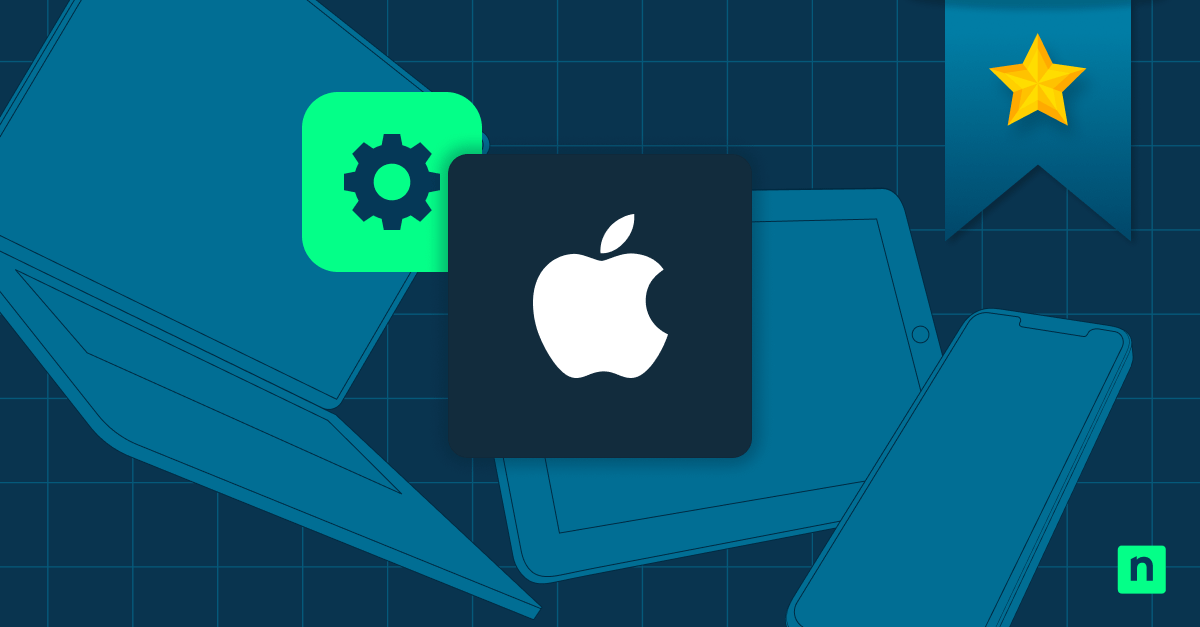Apple and iOS mobile device management (MDM) is the management of Apple mobile devices used in business environments. Apple device management is accomplished by monitoring the remote Apple devices, tracking their location and activity, and securing them through configurations, policy application, policy management, and more. All these tasks are completed remotely and behind the scenes by Apple MDM servers and systems, so the user experience is virtually unaffected.
What this article will cover:
– The shift to remote work and its effect on MDM
– Why is MDM essential for modern businesses?
– How do Apple MDM and iOS MDM work?
– 13 Key benefits of Apple MDM solutions
– 7 Best practices for managing Apple MDM solutions
– Troubleshooting common issues in Apple MDM solutions
The shift to remote work and its effect on MDM
A recent Upwork study found that 22% of the American workforce will be remote by 2025. Interestingly, 41% of workers aged 26 and 41 years old preferred to work from home, according to Statista. Experts project that this trend will continue in the coming years.
This highlights a fascinating phenomenon: It’s becoming more common for employees to work remotely, either using mobile devices supplied by the company or using their own mobile devices in accordance with a company’s BYOD (bring your own device) policy.
Why is MDM essential for modern businesses?
We’ve written another guide on why your business needs MDM, from strengthened security to enhanced operational efficiency. Still, it’s important that we reiterate some of them in this guide—specifically how Apple MDM solutions are crucial for modern IT enterprises.
With more businesses relying on iPhones, iPads, and MacBooks for work, it’s become all the more important for leaders to use a robust MDM for Apple. The best Apple MDM software provides a centralized solution to enforce security policies, configure devices remotely, and ensure compliance without disrupting user experience.
For Apple ecosystems, iOS device management plays an even bigger role due to Apple’s tight security architecture and built-in management features. Businesses need a structured approach to provisioning devices, deploying apps, and securing corporate data, especially in remote or hybrid work environments where employees use both personal and company-issued devices.
How do Apple MDM and iOS MDM work?
Main functions/features of Apple MDM:
Device management
The first function of Apple MDM, which is necessary for effective device management, is enrolling the users and devices that are using mobile Apple devices. Device enrollment typically occurs either manually or automatically, and there are three enrollment types:
- Automated device enrollment enables the addition of a new device to the MDM and includes a simpler device setup from the moment the organization receives the device.
- Device enrollment is when users manually enroll the device and creates an enrollment profile to add the device to the MDM solution.
- Mobile iOS devices can also be added to the MDM manually through user enrollment. User enrollment is for BYOD when a user owns the device instead of the business,
Device management in Apple MDM also involves tracking and monitoring mobile assets. Apple MDM software can receive pertinent device information regarding device health, activity, software and applications, and configurations. This information enables better support for these mobile devices.
Application management
Application management in Apple MDM allows you to control how the apps on mobile devices interact with organizational data. The apps that Apple MDM distributes and installs are called Managed Apps, and because the MDM installed them, you are given more control over how they are handled. This means that, through the MDM, you can determine a variety of application restrictions or allow certain application functions to occur.
Compliance
An important function of iOS device management is ensuring that all devices in the business remain compliant with organizational policies. The Apple MDM platform can monitor mobile Apple devices to see whether they are in line with the set policies. If they are not, the MDM can take action by remotely wiping devices if the device or data is at risk or by setting restrictions.
There is an extensive list of MDM restrictions for iOS devices. These restrictions can limit functionality and may be supervised.
Security
The functions above help to serve the final function of Apple and iOS MDM, which is to increase security on mobile Apple devices. Apple MDM solutions allows organizations to enroll Apple devices, set secure configurations remotely, and monitor device compliance.
Device restrictions give administrators the power to prevent users from performing certain actions on their mobile devices. These restrictions can be enabled or disabled, depending on what organizational policies are set or if the user has certain permissions.
Manage iOS Devices with Apple MDM
iOS MDM software enables the management of Apple and iOS devices within corporate IT environments. iOS device management specifically allows organizations to manage iPhones used for work and to access business data, but that doesn’t mean they’re the only types of mobile Apple devices that can be managed. Apple states, “iOS, iPadOS, macOS, and tvOS have a built-in framework that supports mobile device management (MDM).”
13 Key benefits of Apple MDM solutions
Apple and iOS MDM is an essential IT management tool for businesses that manage Apple devices. The best MDM for Apple provides a centralized dashboard to provide these key benefits:
1. Efficient mobile device deployment
Apple & iOS MDM provides zero-touch deployment, which makes it easy to distribute purchased content and set up mobile devices. Device deployment is also automated to further simplify and streamline the process.
2. Remote configuration and application distribution
The software also enables bulk deployment automation for device configurations. Using Apple’s Blueprint feature, you can set up a configuration profile and apply it to designated endpoint devices, like an iPhone or iPad. Applications can also be easily distributed to mobile Apple devices using the Apple MDM platform.
3. Effective restriction management
Apple MDM solutions also enable you to set certain restrictions for any Apple devices enrolled in the MDM. Apple provides an extensive list of MDM restrictions for iPhone and iPad devices.
4. Enhances security and control
Apple MDM solutions allow IT enterprises to enforce strong security measures such as encryption, remote locking, and data loss prevention. Businesses can set password policies, multi-factor authentication (MFA), and encryption rules to protect sensitive data from being stolen by threat actors. An MDM for Apple also allows administrators to quickly lock or wipe a lost or stolen device remotely, preventing unauthorized access.
5. Increases device visibility
Managing a large fleet of Apple devices can be challenging without proper oversight. Apple MDM solutions provide real-time tracking, reporting, and analytics, giving IT administrators full visibility into device health, usage, installed applications, and security compliance. This level of monitoring helps businesses detect potential threats early and ensure all devices remain compliant with company policies.
6. Protects organizational data
iOS device management ensures corporate data stays protected by separating work and personal data on devices. Features like Managed Open-In and Data Loss Prevention (DLP) restrict data-sharing between unmanaged apps, reducing the risk of sensitive information being leaked. Additionally, IT teams can remotely remove corporate data from a device without affecting personal files, especially in BYOD environments.
7. Enforces adherence to compliance standards
For organizations operating in regulated industries like healthcare, finance, or government, compliance with standards such as GDPR, HIPAA, and SOC 2 is critical. Apple MDM solutions ensure adherence to compliance policies by enforcing device encryption, app control, and access restrictions. IT administrators can generate compliance reports to verify that all company devices meet security requirements.
8. Lowers device and IT costs
An MDM for Apple significantly reduces IT workloads and costs. Instead of manually configuring each device, IT teams can use zero-touch deployment to pre-configure settings before employees receive their devices. Additionally, remote troubleshooting and software updates eliminate the need for on-site IT support, which can reduce operational expenses.
9. Simplifies and accelerates device deployment
Apple MDM solutions, combined with Apple Business Manager, enable seamless automated enrollment of devices right out of the box. IT teams can preload necessary apps, configure settings, and apply security policies without requiring manual intervention. This saves time, reduces onboarding friction, and ensures all employees can start using their devices immediately upon receiving them.
10. Provides app and data control
Apple MDM solutions allow businesses to centrally manage apps, ensuring employees only have access to approved applications. IT administrators can push mandatory apps, block unauthorized apps, and enforce app updates remotely. Additionally, businesses can implement restrictions on file sharing, copy-pasting, or cloud storage access, minimizing the risk of data breaches.
11. Enables remote management and support
With a robust MDM for Apple, IT administrators can remotely troubleshoot, push software updates, and configure settings from a centralized dashboard. If an employee experiences issues, IT can diagnose and fix problems without physical access to the device.
12. Improves employee productivity and user experience
By providing a pre-configured, secure, and ready-to-use device, Apple MDM solutions ensure that employees can focus on work without dealing with technical setups or security configurations. Employees also benefit from automatic updates, seamless app access, and company-wide policies that enhance their workflow. Businesses can also set role-based access permissions, ensuring employees have access to only the tools they need.
13. Future-proofs IT infrastructure
As businesses scale and adopt new technologies, Apple MDM solutions help IT teams manage devices efficiently without additional complexity. Whether supporting new Apple releases, integrating with cloud services, or adapting to evolving security threats, MDM provides the flexibility to adjust policies, scale operations, and enhance security as the business grows.
7 Best practices for managing Apple MDM solutions
1. Automate device enrollment and configuration: Leverage Apple Business Manager and Automated Device Enrollment to streamline device provisioning.
2. Implement role-based access and app management: Use MDM role-based policies to define access permissions based on job roles.
3. Enforce strong security and compliance policies: We recommend enforcing passcode policies, encryption settings, and remote wipe capabilities through your MDM solution.
4. Monitor device health and compliance regularly: A great MDM for Apple helps you continuously monitor device status to detect potential security risks early.
5. Schedule automatic updates and patch management: Configure your Apple MDM or iOS MDM to automatically push updates to managed devices while ensuring minimal disruption to workflows.
🛑 Learn best patch management practices to improve compliance and security.
6. Optimize device and app lifecycles: Effective iOS device management regularly assesses device performance, storage capacity, and battery health to determine when upgrades or replacements are necessary.
7. Educate employees on MDM policies and security best practices: Create a culture of security in your office. Provide regular training on security best practices, including phishing prevention, password hygiene, and safe app usage.
Troubleshooting common issues in Apple MDM solutions
While an MDM for Apple generally provides powerful tools for managing devices, businesses often face deployment, security, and user experience challenges. Understanding these challenges and their solutions can help organizations maintain smooth MDM operations and improve iOS device management strategies.
1. Device enrollment issues
One of the most common issues is failing to enroll a device properly. This can be due to incorrect configuration, network issues, or device incompatibility.
✅ To resolve this, ensure that devices are properly linked to Apple Business Manager and Automated Device Enrollment. Double-check MDM profiles, network settings, and Apple Push Notification Services (APNS) configurations before deployment.
2. Managing BYOD vs. corporate-owned devices
Balancing security and privacy in a BYOD environment is challenging, as some employees may be hesitant to enroll their personal devices into MDM due to privacy concerns.
✅ To resolve this, it may be a good idea to implement a separate work container policy to isolate businesses and personal data. Instead of full device enrollment, use user enrollment for BYOD devices, ensuring that MDM only manages work-related apps and settings while preserving personal data and privacy.
3. Ensuring consistent software updates
Apple is well-known for frequently releasing iOS, iPadOS, and macOS updates, which may make it difficult to ensure that managed Apple devices stay up to date.
✅ We recommend following this guide on managing MDM app updates to resolve this. We also suggest setting patch compliance rules that alert IT teams when devices are currently running outdated software, allowing them to act.
4. Managing app deployments and licenses
Organizations can struggle with distributing apps efficiently, managing licenses, and ensuring app updates reach all updates. Some employees may attempt to install unauthorized third-party apps, which can introduce security risks.
✅ Enforce whitelisting and blacklisting policies to ensure only approved applications are installed on managed devices.
5. Handling lost or stolen devices
Lost or stolen devices pose a major security risk, especially if they contain sensitive company data. Without proper protections, data breaches or unauthorized access could occur.
✅ We recommend using a robust MDM for Apple that allows you to lock or wipe devices remotely. Consider a solution that also requires device encryption and strong passcodes.
Is mobile device management only for Apple devices?
MDM for Apple devices is just one type of OS that MDM has been designed to manage. Fortunately, MDM has also been created for other types of OS and can be used for a wide range of devices, including Windows and Android.
If your business contains multiple kinds of devices, you’ll want to ensure you choose other MDM solutions that match the types of devices in your IT environment, such as Windows or Android MDM. Heterogenous IT environments are a common occurrence, so your business will likely need an MDM solution that can handle all types of OS that are within your organization.
Protect your business by managing your Apple & iOS devices
In today’s modern workforce, Apple and iOS MDM are essential for any organization that contains mobile Apple devices. Apple MDM software solutions enable greater management capabilities of mobile devices and offers increased security and control, among other benefits.
Mobile devices are just one of the many types of endpoints that are used in IT environments. For greater visibility, security, and control, consider pairing MDM software with an endpoint management solution.
Learn more about NinjaOne iOS MDM Software and iPadOS MDM Software or sign up for a free MDM trial.
Frequently Asked Questions (FAQs)
- What is the difference between Apple MDM and regular mobile device management solutions?
Apple MDM is specifically designed for iOS and macOS devices, offering seamless integration with Apple’s ecosystem, unlike general MDM solutions that support multiple platforms.
- Is Apple MDM suitable for small businesses, or is it only for enterprises?
Apple MDM is beneficial for both small and large businesses. Even startups can use MDM to ensure security, compliance, and ease of device management.
- Can employees opt out of MDM on their personal devices?
Yes, if the device is personally owned, employees can choose not to enroll. However, corporate-issued devices may have mandatory MDM policies.
- Does Apple MDM affect device performance or user experience?
No, Apple MDM operates in the background without affecting device performance or speed. It enforces policies and security measures without interfering with regular device usage.
- What happens if an employee leaves the company? Can their device be remotely wiped?
Yes, administrators can remotely wipe corporate data while preserving personal data on employee-owned devices (BYOD). For corporate-owned devices, a full factory reset can be performed.








